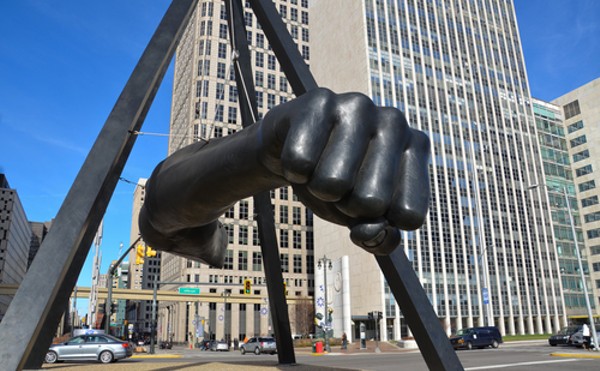After four years of nothingness, redevelopment of Detroit’s desolate Rivertown area may finally be on the horizon.
You do remember Rivertown, don’t you? Way back during the administration of former Mayor Dennis Archer, the area along the Detroit River near Chene Park was selected to be the site of the three permanent casinos planned for Detroit. That plan eventually fell through, but not until after the city acquired 57 acres in the area.
Since then, Rivertown has been in limbo. Officially, city policy still calls for casinos on the land — an option that was abandoned back in 2001.
“We have an obsolete plan for a day long ago,” says Ron Flies, head of project management for Detroit’s Economic Development Corporation. The EDC is a quasi-public agency that plays a major role in shaping growth within the city. In that capacity, EDC worked with the city’s Planning Commission to devise a new plan that calls for mixed-use development in the Rivertown area. That plan envisions mostly residential projects along with small, boutique-style retail shops, some restaurants and park space.
As it stands now, the plan envisions tearing down buildings on the 57-acres of land owned by the city.
That’s where the Riverfront East Alliance (REAL) comes in.
REAL, a community organization, doesn’t oppose the proposed plan in general, but member Steve Wasko says his group would like to see the buildings on Franklin Street between Rivard and Riopelle streets preserved.
“We have a vision for one block in terms of creating a neat setting there that could set the tone for the new development in the surrounding area,” Wasko says. Preserving the buildings to create a historic core for the district will give the area the sort of charm found in other waterfront districts — charm that no new construction can match, he says.
“At some point one has to start to save buildings instead of tearing them down,” Wasko says. “That block is worth more than the series of buildings.”
Flies doesn’t think much of the idea.
He says it’s not financially feasible to save the buildings for reuse. He also says that preserving the buildings will make it difficult to achieve the sort of density needed for residential development to proceed.
REAL will have a chance to make a pitch to the Economic Development Corporation Board before the proposed plan is finalized and sent to the City Council for consideration.
Wasko is hopeful the powers that be will see the value of preservation.
“Our strong feeling,” he says, “is that this is the real test of whether or not the city and community are going to wake up and see what it’s been destroying all these years and save some of it.”
Send comments to [email protected]




